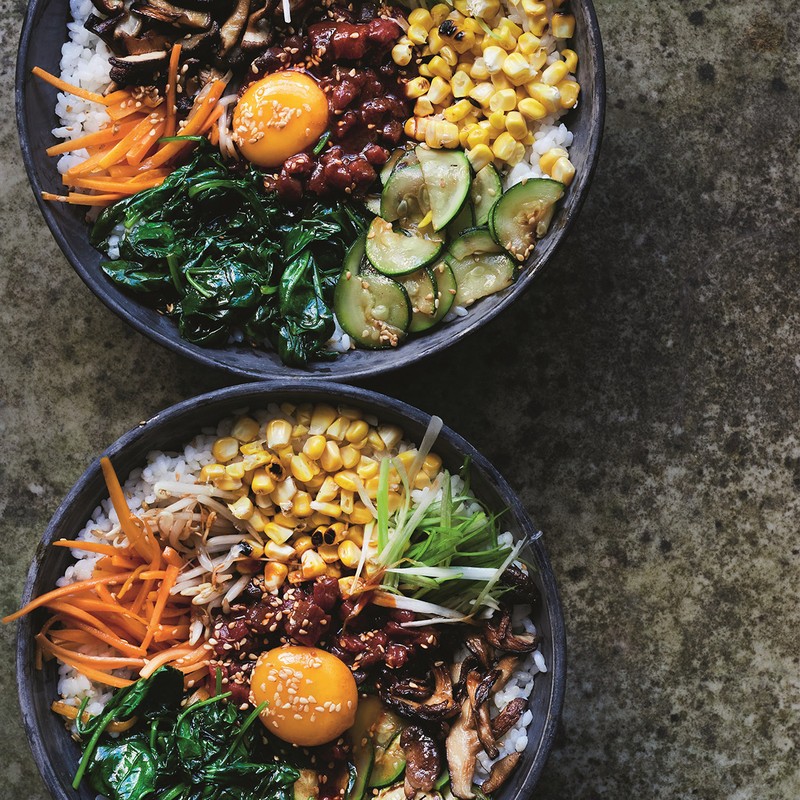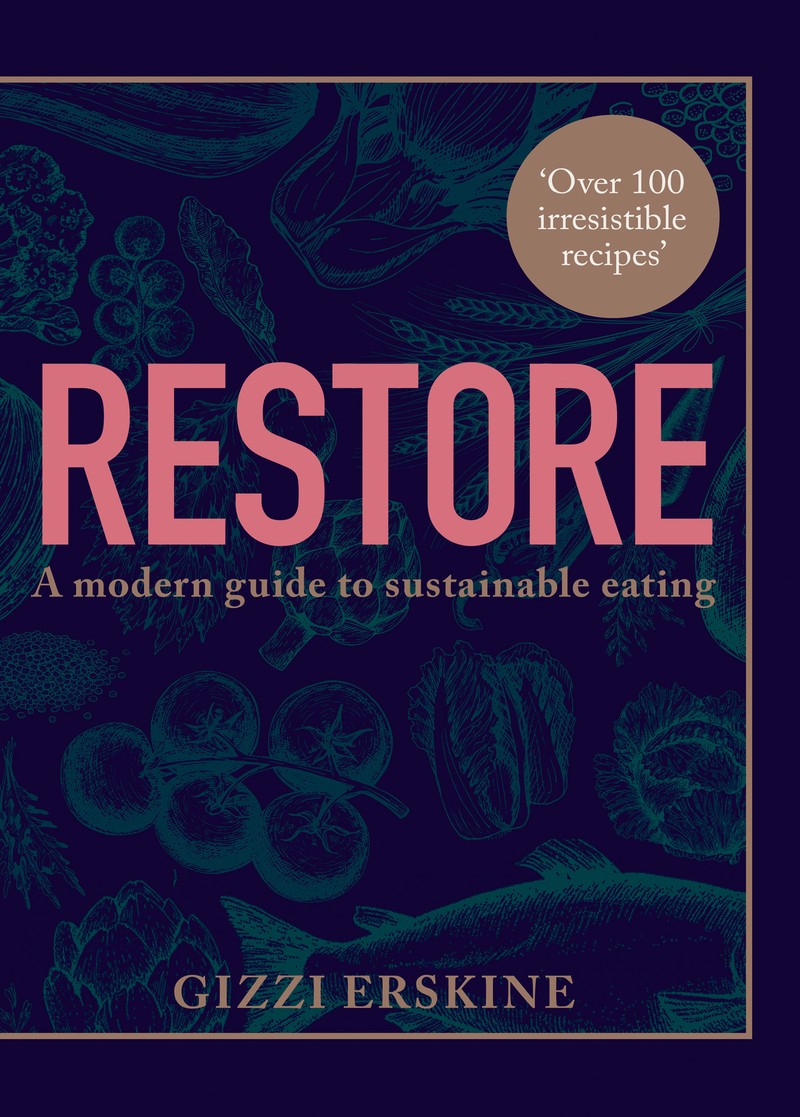
Bibimbap
One of my breakthroughs was bringing attention to Korean food in the UK back in 2007. In a bibimbap bowl, rice is topped with vegetables, meat (optional), egg yolk and a spicy sauce and by the time the rice gets to the table it has a fantastic caramelised crust. Bibimbap is delicious, healthy and a great way to tackle a fridge forage. I've used traditional toppings, but do play around with seafood, tofu and different veg: the only mainstays are the rice, egg yolk and sauce.
Put the rice and water in a large saucepan with a good pinch of salt. Cover, bring to a simmer and cook for 12 minutes. Take off the heat and steam (lid on) for 10 minutes.
Gently heat the sauce ingredients in a small saucepan until emulsified. Set aside.
Mix together the sesame and sunflower oils. Heat a large wok or frying pan over a high heat, add 1 tablespoon of the oil mix and add half the spinach with a pinch of salt. Cook briefly until wilted, then remove and drain on kitchen paper, squeezing out any liquid. Repeat with the remaining spinach. Add another splash of oil and briefly fry the courgette until golden. Remove and set aside. Repeat this process with the carrot, beansprouts, spring onions and shiitake mushrooms. Rub the sweetcorn cob with oil, salt and pepper, then brown in the pan until the kernels start to char.
Heat two stone bibimbap dishes or a wok on the hob until smoking hot. Place the stone dishes on a heatproof surface (if using). Brush the insides of the dishes (or hot wok) with the remaining oil and add the rice. Group vegetables around the edge, put the raw meat in the middle, then the egg yolks and 2 tablespoons of the sauce for each serving. Top with sesame seeds. Mix the sauce into the rice at the table with a spoon.
Recipe courtesy of Restore by Gizzi Erskine
DISCLAIMER: We endeavour to always credit the correct original source of every image we use. If you think a credit may be incorrect, please contact us at info@sheerluxe.com.


